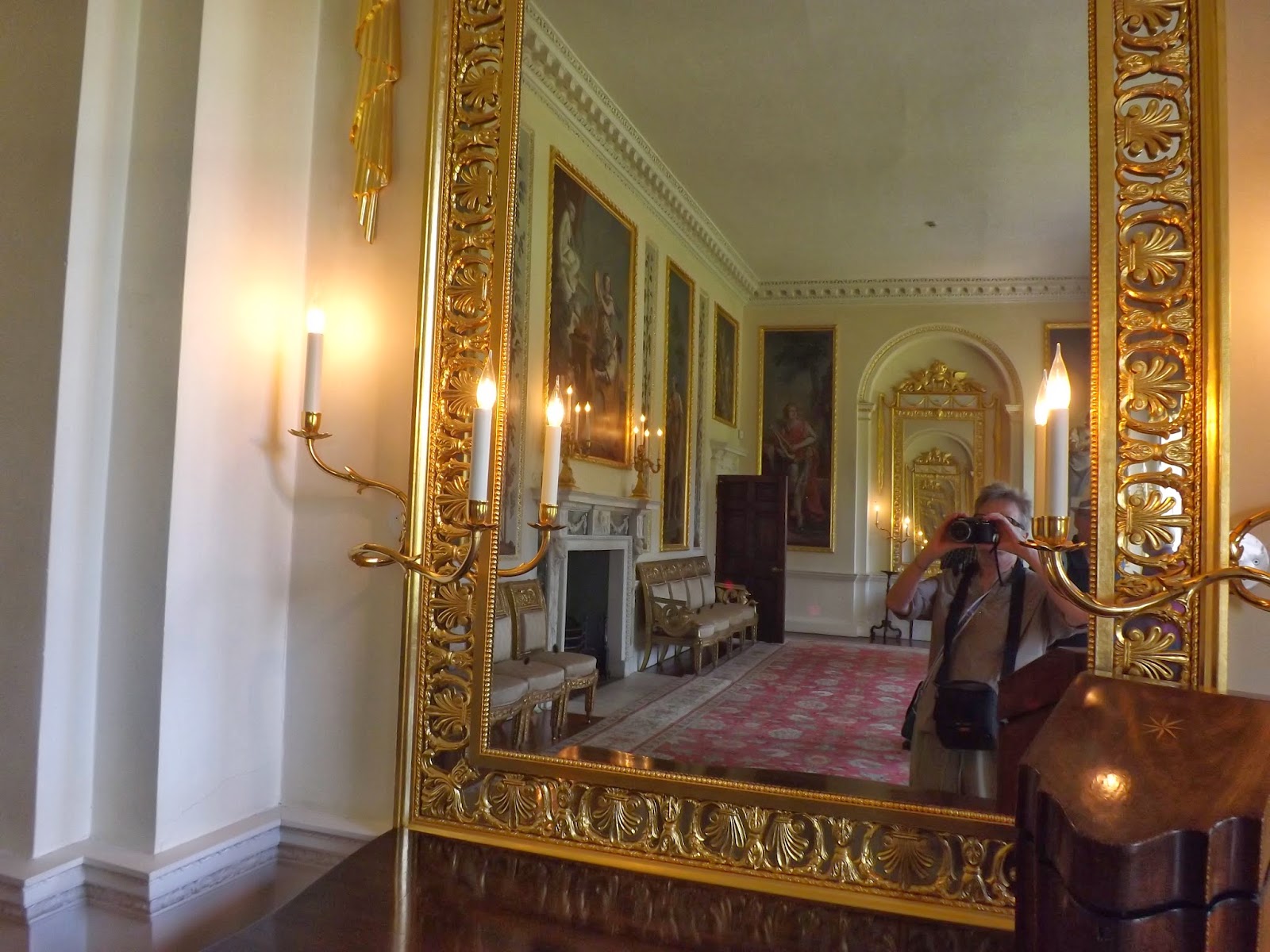After Friday night rush hour on the motorway and a great meal it was good to spend the evening chilling out while everyone
congregated.
congregated.
There is a lot of history to this place dating back to 900 AD which I will share at the end of the post
Saturday morning hailed bright and clear and this was the view through our bedroom window
Looking out straight onto the old family chapel
with a beautiful interior
and looking out of a window
With such a lovely day a walk around the grounds before breakfast seemed like a good idea
Looking back at the chapel with our window behind it
It is now afternoon free time and the weather has deteriorated and it is about to rain. We have opted to walk around the grounds while others have gone walking (they got very wet) or play tennis or rest.
back inside out of the rain and here in the old Butler's Pantry now used for table tennis
Believe it or not, this was the room we were given for the Crèche, with all the felt tip pens at the other end of the room, and there was a very well equipped nursery for the babies and toddlers
and the meeting room with prams everywhere
A great time of learning, sharing, prayer, and bonding and encouraging each other for about 70 of us. Must not forget to mention the food which was delicious and plentiful
Certainly worth reading the history of the Hall
taken from the official website
Hothorpe's history began in about 900 AD, although at this time it was named Ude-torp. A Danish Viking leader called Ude navigated his 80 foot long-boat from the Wash along the River Welland about as far as Marston Trussell. The River can be seen at the far end of the grounds, and certainly does not look navigable now!
According to the Domesday Book (1086), Hothorpe was then under the ownership of the Abbey of St. Edmundsbury, but by the time of Henry III (1216- 1272) it was under the control of a feudal overlord, Hastings, Earl of Huntingdon.
In 1330, Hothorpe was owned by Edmund Trussell, who married Margery d'Oserville whose family had lived here for about 34 years. The Trussells held the Manor for 150 years, and then in 1482 there were three changes of ownership in one year.
William Villiers became Lord of the Manor in 1506, and the family held Hothorpe for about 94 years. It is interesting to note that in about 1600, Sir Edmund Montague of Boughton House, Kettering, laid claim to part of Hothorpe Manor -a claim dating back to about 1050. This was resolved by the owner of Hothorpe agreeing to pay 25 shillings a year to the Montagues. This right was subsequently transferred to the Spencer Estate of Althorpe and was increased to £5 per annum, which we still have to pay to Earl Spencer.
By 1610 , George and Elizabeth Bathurst were living at Hothorpe with their family of thirteen sons and four daughters. They were staunch supporters of Charles 1, and six of the sons were killed fighting for their king.
For a few years up to 1715, Hothorpe was owned by the Cave family, who lived at Stanford Hall (now owned by Lady Braye).
In 1788, William Cooke bought the Hall. At this time, the house was probably of Elizabethan or Jacobean design, and was sited about one third of a mile away from the present house to the South West. However, the old house was pulled down, and the present hall was built in 1799; the crests of many of the previous owners can be seen on the Manor House staircase.
In about 1880, the Cooke family sold the Estate to Sir Humphrey de Trafford, a staunch Roman Catholic. He built the Chapel in 1891, and his children are depicted as cherubs on the ceiling. The House passed to his second son, who was well known in sporting circles. One of the top amateurs in first class cricket, he captained Leicestershire and played at Lord's with the legendary W.G. Grace. Later he turned his attention to horses, and commissioned the splendid stable block, now named, 'The Trafford Wing'. In time, however, the family fell into financial difficulties and sold the Hall. Rumour has it that at one time Lady de Trafford gambled away part of the family estate at Old Trafford, where Manchester United now play football.
During the Second World War, the Hall was used by the London County Council as a children's home, for youngsters evacuated from London. However, the house lay empty after the war for a number of years.
Ten years later, refugees from Central Europe fled to England, some of whom had been persecuted for their faith. The Lutheran Council of Great Britain was formed to give some unity to the Lutherans in this country. So in 1955, Hothorpe Hall was purchased by the Lutheran Church for a mere £3,500, although it was somewhat neglected, with trees growing out of some of the bedroom windows!
For 29 years, Hothorpe was used by the Lutheran Church as a centre for spiritual growth and renewal, particularly among young people.
In November 1984 Hothorpe changed hands again. It was purchased by three families to provide a Conference Centre where Christians from any denomination could experience spiritual refreshment and fellowship.













































































